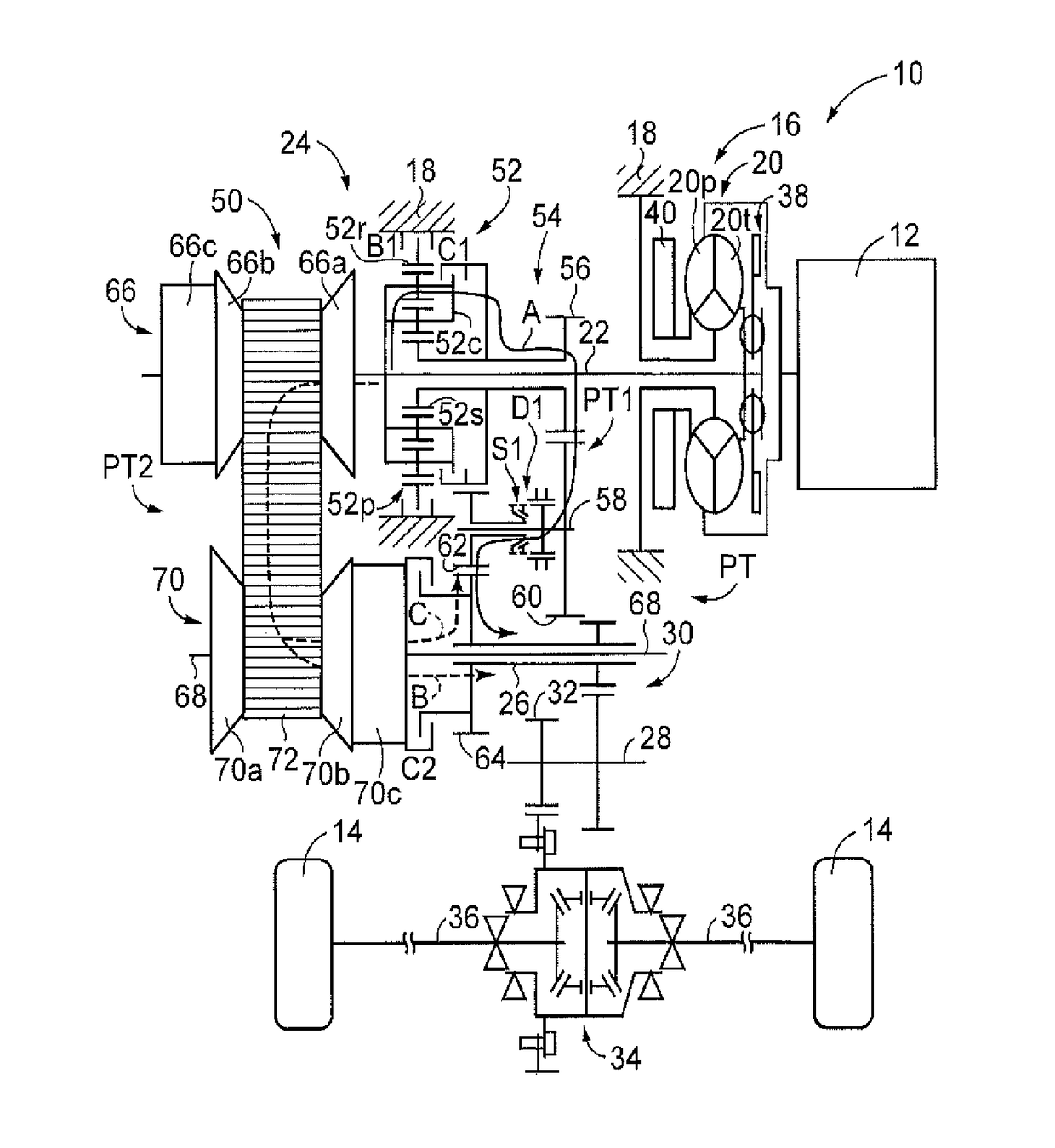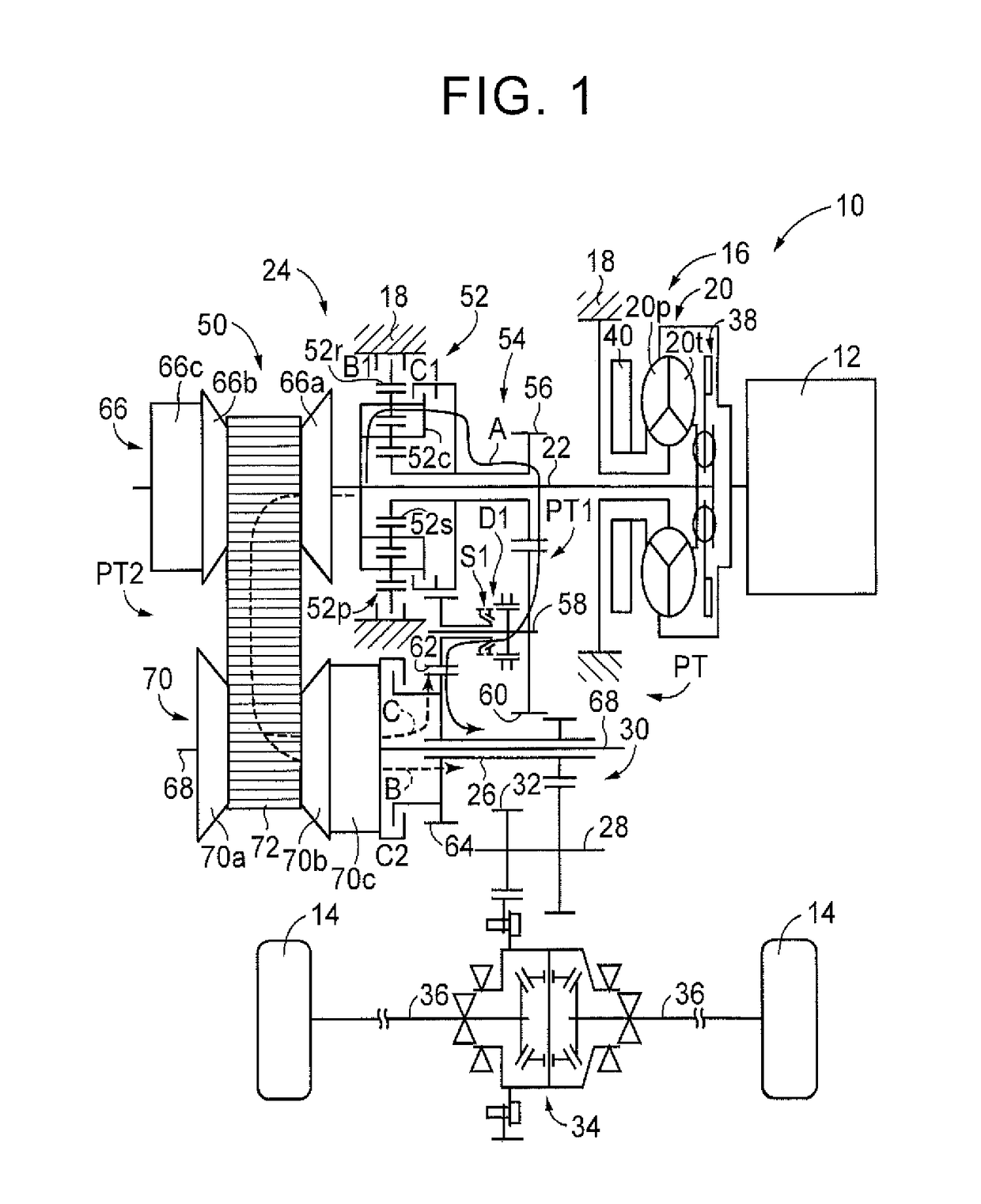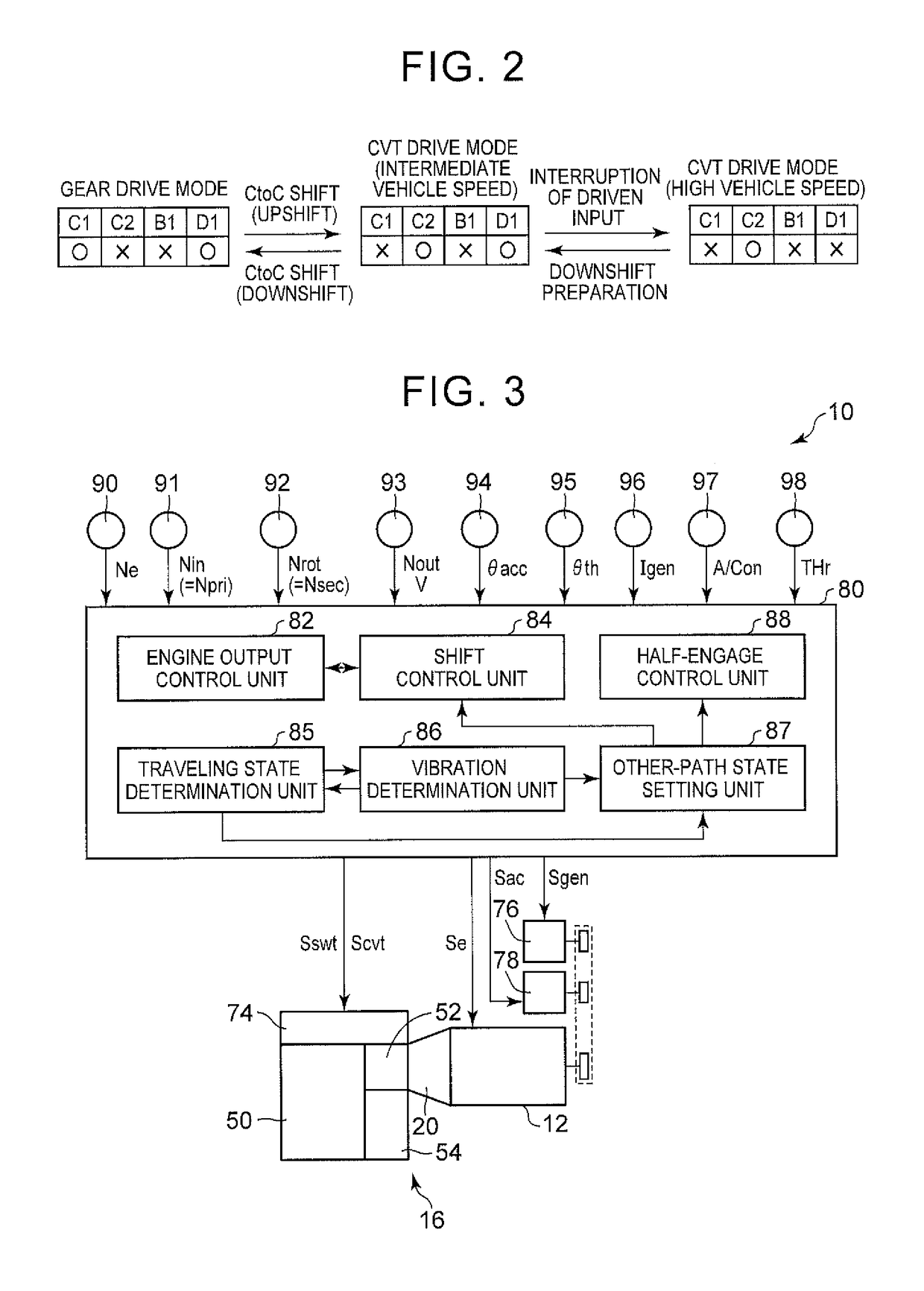Control apparatus for power transmission system
a technology of power transmission system and control apparatus, which is applied in mechanical apparatus, transportation and packaging, gearing, etc., can solve the problems of deterioration of driving ability and drivability, and achieve the effect of accurately determining whether the vehicle is
- Summary
- Abstract
- Description
- Claims
- Application Information
AI Technical Summary
Benefits of technology
Problems solved by technology
Method used
Image
Examples
first embodiment
[0030]FIG. 1 is a view that illustrates the schematic configuration of a vehicle 10 to which the present disclosure is applied. In FIG. 1, the vehicle 10 includes an engine 12, drive wheels 14, and a power transmission system 16. The engine 12 is a gasoline engine, a diesel engine, or the like, that functions as a driving force source for propelling the vehicle 10. The power transmission system 16 is provided in a power transmission path between the engine 12 and the drive wheels 14. The power transmission system 16 includes a torque converter 20, an input shaft 22, an automatic transmission 24, an output shaft 26, a counter shaft 28, a reduction gear unit 30, a differential gear set 34, a pair of axles 36, and the like. The input shaft 22 is coupled to the torque converter 20. The automatic transmission 24 is coupled to the input shaft 22. The output shaft 26 is coupled to the output side of the automatic transmission 24. The pair of axles 36 are coupled to the differential gear se...
second embodiment
[0094]As described above, according to the present second embodiment, by setting the speed stage for establishing the second power transmission path PT2 to the lower vehicle speed-side speed stage or the higher vehicle speed-side speed stage with respect to the currently established speed stage, it is possible to easily alternatively set in response to the traveling state the speed ratio γpt2 of the second power transmission path PT2 to the lower vehicle speed-side speed ratio with respect to the speed ratio of the first power transmission path PT1 or the higher vehicle speed-side speed ratio with respect to the speed ratio of the first power transmission path PT1.
[0095]The first and second embodiments of the present disclosure are described in detail with reference to the accompanying drawings; however, the present disclosure is also applicable to other embodiments.
[0096]For example, in the above-described first and second embodiments, when torque is circulated from the other power...
PUM
 Login to View More
Login to View More Abstract
Description
Claims
Application Information
 Login to View More
Login to View More - R&D
- Intellectual Property
- Life Sciences
- Materials
- Tech Scout
- Unparalleled Data Quality
- Higher Quality Content
- 60% Fewer Hallucinations
Browse by: Latest US Patents, China's latest patents, Technical Efficacy Thesaurus, Application Domain, Technology Topic, Popular Technical Reports.
© 2025 PatSnap. All rights reserved.Legal|Privacy policy|Modern Slavery Act Transparency Statement|Sitemap|About US| Contact US: help@patsnap.com



